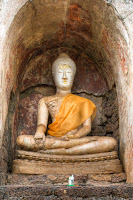The Gestalt Theory was established by a Dr. Max Wertheimer from Germany around 1912. It has been widely adopted by designers, painters and photographers as a means of producing more visually pleasing images.
The main theme of the theory evolves around the relationship between the individual parts of an image and the whole of the image. The theory says the whole is always different from the sum of the parts or greater than the sum of the parts.
More specifically, followers of the theory are interested in the factors that help the viewer distinguish objects as petterns or figures. They propose four principles of perception organization;
1. Proximity
The theory here claims that objects that are in close proximity to one and other are seen as grouped.
2. Similarity
Objects that have common qualities tend to be related. This could be objects of equal size, shape, direction colours or textures etc.
3. Continuity
The theory states here that each linear element has kinetic inertia and is seen as continuing in the same direction and with the same movement. In other words a straight vertical line is seen as continuing in a straight vertical line even beyond the border of the image, and a curved line is seen as continuing as a curve beyond the border.
4. Closure
The eye prefers to see spacial order and so if an image has several objects that would create a closed shape if a line was drawn between them it will be more appealing that a set of objects randomly positioned.
Now, lets try and explain each of the above by providing sample images. I'm not sure yet which images I will be submitting to my tutor but hopefully by including several candidates in this Blog it will help me decide on the best examples.
Proximity - objects can be grouped side by side, up and down or front to back. I've tried to be clever here by grouping the three objects so they can be seen as any or all of the groupings.
Similarity - objects can be of similar qualities and direction as seen in this next image both diagonally and vertically.
Symmetry can be considered a special case of similarity
Continuity - this image's curved lines can be continued to create closure of the object.






No comments:
Post a Comment